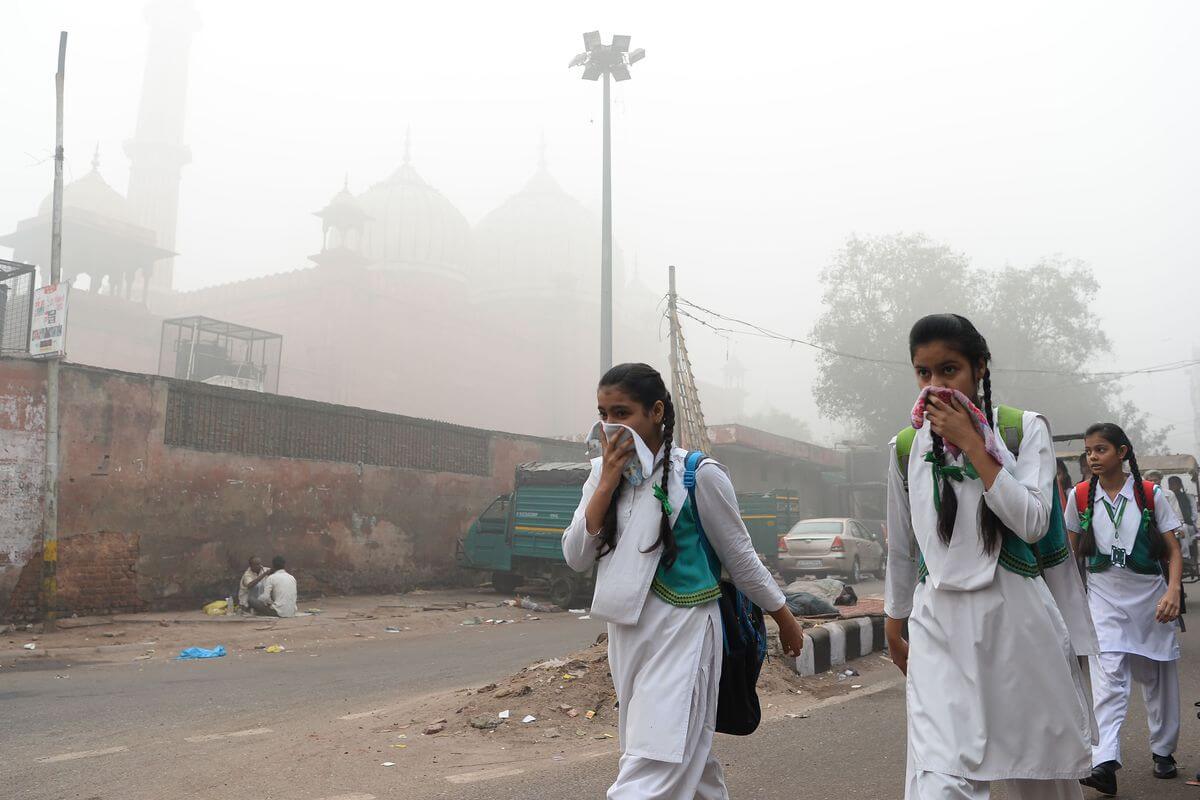New Delhi and Lahore have both shut down schools as the air quality in the two cities worsens. The deteriorating air quality has been attributed to the seasonal crop burning and industrial pollution, and has been worsened by the onset of winter, resulting in the cities being covered in toxic smog.
In fact, the PM2.5 levels touched 500 last week in New Delhi, which is over 30 times the recommended limit by the World Health Organisation, and has been categorised as a “severe” event. Moreover, in some areas, the PM2.5 levels hit 1000, which is the highest level the charts can measure and is considered “hazardous.”
In response, on Saturday, schools across New Delhi, home to over 20 million people, were shut down and government offices were asked to operate at 50% capacity, with others urged to work from home. Furthermore, the Delhi government ordered a ban on construction work and banned the entry of trucks carrying non-essential items into the city. The city also closed down five coal-powered plants following an order by the central government’s Ministry of Environment, Forest, and Climate Change.
The Delhi government has also deployed novel methods to tackle the concerning rise in pollution levels; “anti-smog guns” and water sprinklers are being used three times a day in hotspots. However, experts say these measures have a limited impact on air quality and are merely short-term emergency measures.
Earlier this month, the Supreme Court of India raised concern about the worsening air quality in the city, urging the Delhi government to declare a “pollution lockdown” and restrict the movement of people. It also chided the administration for its failure to successfully curb rising pollution levels each year.
However, the Delhi government claims that such measures would be entirely pointless unless similar curbs are imposed in neighbouring states. Keeping this in mind, work from home orders and other restrictive measures have also been implemented in Punjab, Haryana, and Uttar Pradesh.
Meanwhile, Lahore has been declared as the world’s most polluted city, with an air quality ranking of 348. This is significantly higher than the hazardous level of 300. The city houses 11 million people and has featured on the list of the most polluted cities in the world for several years now.
Residents have criticised the government for the lack of urgency shown to deal with the worsening air quality. However, authorities have responded by blaming India for the smog and even denied the damning figures, claiming they are exaggerated.
In both New Delhi and Lahore, crop burning from neighbouring regions is a major contributor to pollution; vehicular pollution, dust, and industrial smoke have also worsened the crisis. These multiple factors have contributed to a surge in respiratory issues among children in both cities.
Worsening air quality around this time is a yearly occurrence in both India and Pakistan. While both countries have attempted to improve the situation with emergency measures, experts and residents continue pushing for long-term year-round measures that will prevent pollution levels from spiking each year.

